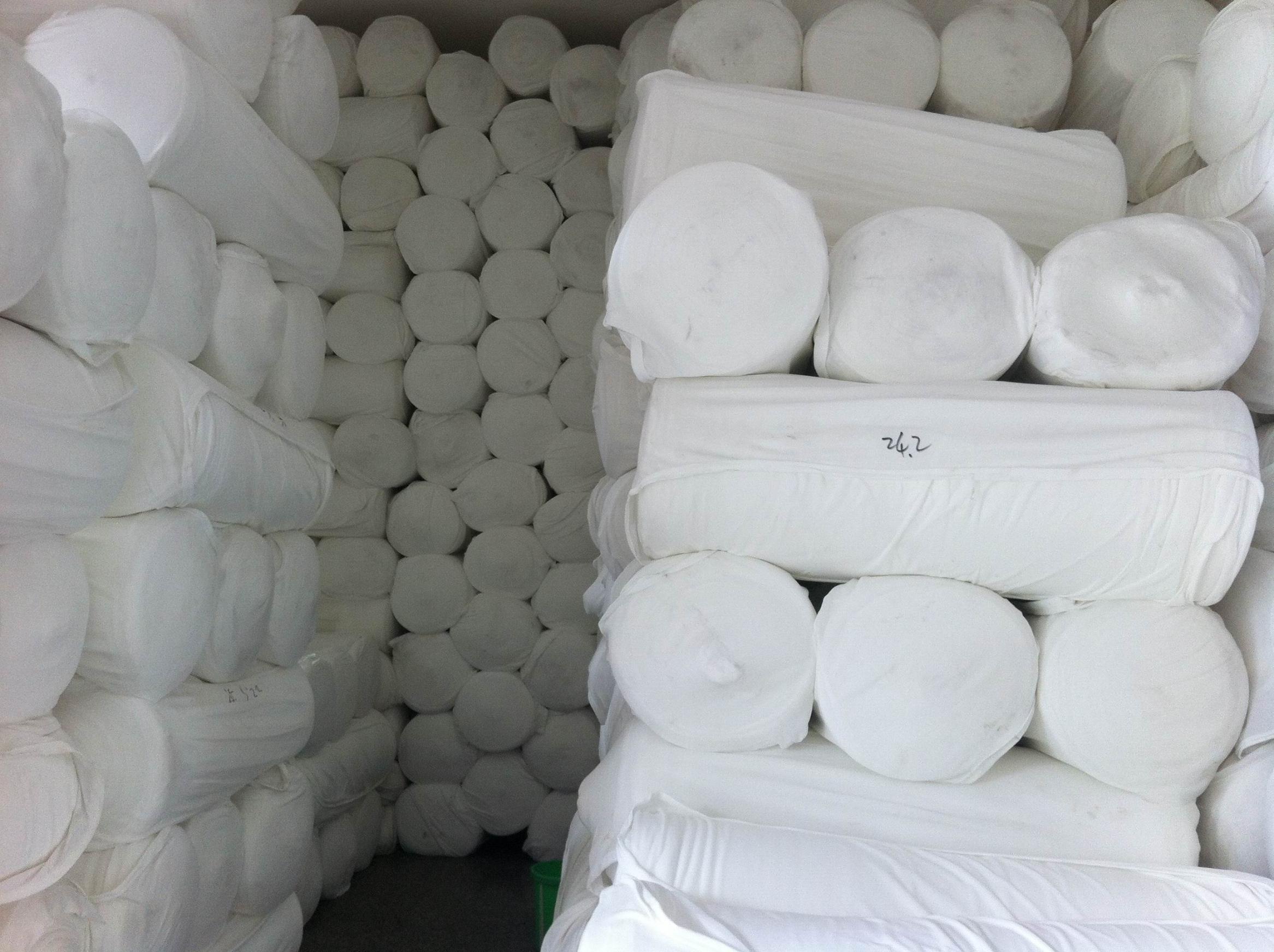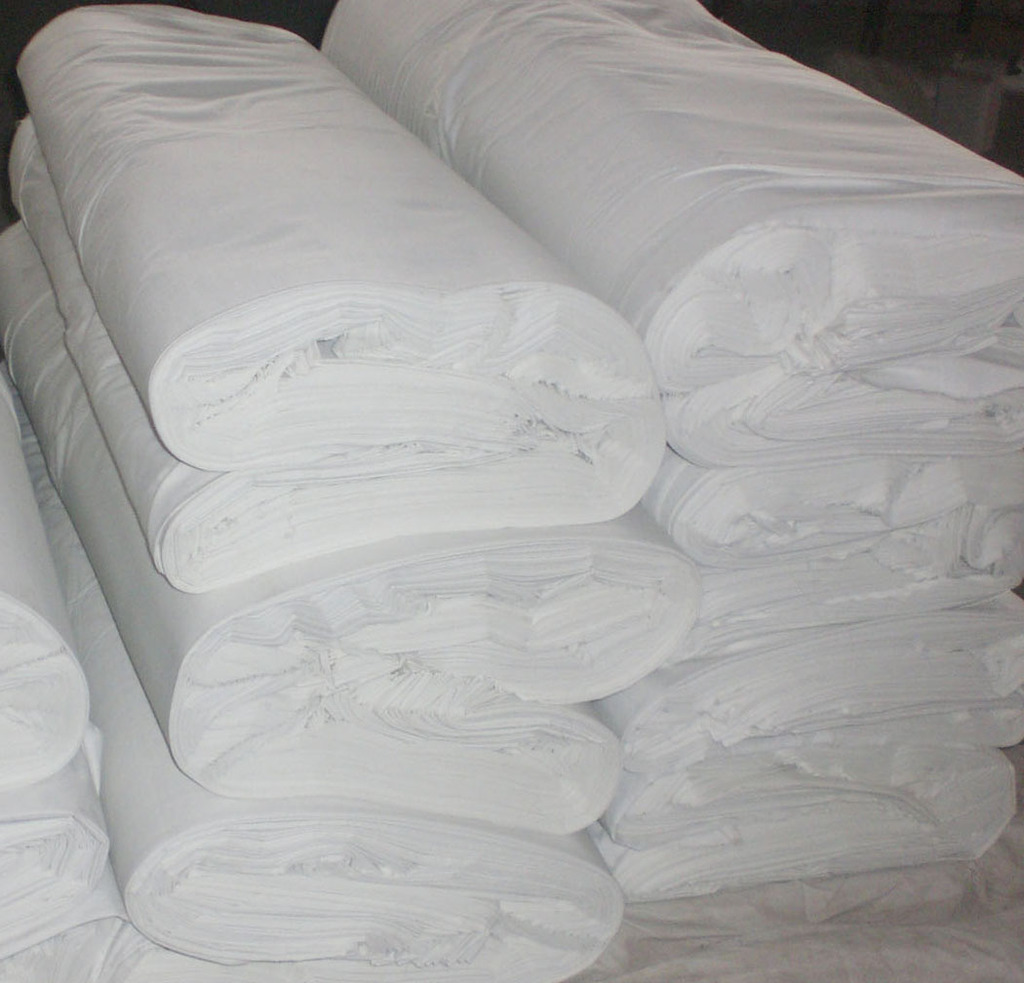Gray fabric refers to the fabric that has not been processed after printing, or the natural cotton fabric used for printing and dyeing. Industrial grey fabrics generally refer to fabrics, or laminated grey fabrics, gummed grey fabrics, and the like.
First, gray cloth classification
There are various kinds of grey fabrics and there are many classification methods. According to the yarn raw material classification, it can be divided into:
(1) Pure textiles: The raw materials that make up the fabrics all use the same kind of fibers, including cotton fabrics, wool fabrics, and polyester fabrics.
(2) blend fabric: the fabric material composed of two different types of fiber or two or more types, made from warp yarns blended with cotton and other viscose polyester acrylic blends.
(3) Blended fabrics: The raw materials that make up the fabrics are made of single yarns of two kinds of fibers, and they are made by combining strands. They have low-elasticity polyester filaments, and they are mixed in medium and long lengths. They also have polyester staple fibers and low elasticity. Polyester filaments are blended into strands, etc.
(4) Interlaced fabrics: The raw materials used for the two directions of the fabrics are made of different fiber yarns, silk satin rayon interlaced satin satin, nylon and rayon interwoven Neifa spinning.
According to the composition of fabric raw materials whether dyeing classification can be divided into
(1) White blank fabric: The raw materials that have not been dyed are processed into fabrics, which are also known as raw fabrics.
(2) Color fabric: The dyed and dyed raw materials or fancy yarns are processed into fabrics, which are also known as cooked goods fabrics.
According to the processing method can be divided into the following categories.
(1) Machine (Shuttle) fabric: It is a fabric that is composed of yarns that are arranged perpendicular to each other, that is, both horizontal and vertical systems, and are interwoven on a loom according to a certain rule. There are denim, brocade, board division, hemp yarn and so on.
(2) Knitted fabrics, which are formed by weaving yarns into loops, and are divided into weft and warp knitting.
a. The weft knitted fabric is a weft yarn that is fed from the weft to the working needle of the knitting machine, so that the yarns are sequentially bent into loops and are put on each other.
b. The warp knitted fabric is formed by arranging one or more groups of parallel arranged yarns on all the working needles of the warp knitting machine.
(3) Nonwovens Loose fibers are bonded or sewn. At present, the two methods of bonding and puncture are mainly used. With this processing method, the process can be greatly simplified, the cost of the textile and clothing industry can be reduced, and the labor productivity can be increased, which has broad prospects for development.
(4) Pieces (weaving) of two or more sets of thread-like objects, products that are misaligned, stuck, or intermingled, such as bamboo or rattan products such as mats or baskets; or one or more Yarn products that are twisted, knotted, and knotted with each other. The other category is complex products with special equipment and multi-path yarns that are braided into three-dimensional structures in accordance with a certain set of spatial arrangements.
(5) Composite fabrics made of two or more materials from wovens, knitted fabrics, knitted fabrics, non-woven fabrics, or film materials by interlacing, needle punching, spunlacing, bonding, sewing, riveting, etc. The resulting multilayer fabric.
Second, the technical indicators of the fabric
Length of fabric
Warp, warp, warp yarn density - the length of the fabric direction; the yarn is called warp yarn; the number of arranged yarns within 1 inch is dense (warp yarn density);
Fabric width direction
Weft, weft, and weft densities - fabric width direction; this yarn is called weft, and the number of arranged yarns within 1 inch is weft density (weft density);
Grey fabric density - used to indicate the number of yarns per unit length of woven fabric , usually the number of yarns within 1 inch or 10 centimeters. The national standard specifies that the number of yarns within 10 centimeters is used to express the density, but textiles Businesses are still accustomed to using the number of yarns within 1 inch to express density. As commonly seen, "45X45/108X58" indicates 45 warp weft yarns and the warp and weft densities are 108 and 58 respectively.
Width - The effective width of the fabric, generally used in inches or centimeters, common 36 inches, 44 inches, 56-60 inches, etc., respectively, referred to as narrow, medium and wide, above 60 inches The fabric is particularly wide, and is often called a wide cloth. The width of an extra wide fabric in China today can reach 360 cm. Width is usually marked behind the density, such as: 3 kinds of fabrics mentioned if you add the width is expressed as: "45X45/108X58/60"" width is 60 inches.
Weight - The weight of the fabric is generally the square meter of the weight of the square meter fabric. The weight is an important technical indicator of the knitted fabric. The woollen woollens also generally regards the weight as an important technical indicator. The weight of denim fabric is generally expressed in "Oz", that is, the number of ounces per square yard of fabric weight, such as 7 ounces, 12 ounces of denim, etc.;
Yarn - dyed - Japan is called "fabric dyeing" and refers to the process of dyeing yarns or filaments first, and then weaving with colored yarns. This kind of fabric is called "dyed woven fabric" and produces yarn-dyed fabrics. The factories are generally called dyeing factories such as denim, and most of the shirt fabrics are dyed fabrics.
Gravity calculation
The grammage of a fabric refers to the weight per unit area of ​​the fabric and is generally expressed in grams per square meter or ounces per square yard (oz/Y2). The actual grammage weight is closely related to the finished product width, the printing and dyeing process, the yarn distribution, and the thickness of the yarn. The following grammage weights are calculated as simple formulas and are for reference only.
Non-elastic Burke weight calculation:
a. Color cloth weight (g/m2):
Stretch cloth finished product weight (g/m2):
Note: It is on the machine, finished product width.
Refer to the above formula for calculating the weight of the finished product in the same category. If the latitude and longitude are the line, due to shrinkage, the weight of the finished product is heavier and the weight gain is approximately 1%. Due to the poor cotton blending and short fibers, the air-spinning yarn has a large fiber loss rate through the dyeing and mercerizing process. Therefore, the yarn coefficient is 24 or 24.3*0.95. This coefficient is an empirical formula, and the yarn count is more than 32s. accurate.
Third, analyze the fabric sample steps
A look at two touches, three, four, five, six burns, seven counts and eight counts
A look: look at fabric samples, see organization and style
Second touch: touch feeling, preliminary judgment of the composition of the fabric, with or without special post-sorting trilogy: to determine whether the elasticity
Four points: Judgment is yarn or thread
Five burning: According to the combustion characteristics to determine the cotton or blended
Six news: judging raw material composition based on burning taste
Seven numbers: number of latitude and longitude
Fourth, the method of storing the fabric
The method of stacking gray fabrics is more elaborate. First, there must be a warehouse that is big enough and big enough. Then it should be differentiated according to the type of fabric. For example: the knitted fabrics and the woven fabrics should be distinguished because the knitted fabrics are relatively soft and the woven fabrics are rolled up. comparison standing upright, as well as fabric material classified separately cotton cloth, cotton cloth fiber cloth material and divided into three parts.
1, the wrong stacking method:

This is not conducive to ventilation, the time will be stored, the middle part will be mildew, cotton fabrics will appear spots, and the fabric fastness is reduced, you can gently tear the fabric by hand, we all know that such a fabric becomes a waste cloth .
2, the correct stacking method

This stacking is easy to manage. If you want to find what you want to see at a glance, the benefits are conducive to ventilation, which is convenient for fire protection. The cotton fabric is best placed in a well-ventilated place. For example, the nearest place to the window and the width of the door is one meter. Widths, 6 to 7 rows in a row, the second floor laid flat in the same direction, the number must be the same as the bottom, the third floor is horizontally flat, the same number, and so on.
For more content, please follow this site
Cardigan Sweater,Cropped Cardigan Sweater,Open Front Cardigan,Sherpa Cardigan
Nantong Xinhuaning Craft Garment Co., Ltd. , https://www.newhuaning.com